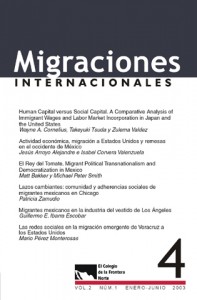
La formación de comunidades de migrantes en los lugares de destino no es un proceso lineal. Factores tales como la duración y dimensión de la migración, las condiciones de incorporación de los migrantes en la nueva sociedad, el interés para organizarse formalmente, los estilos de liderazgo y la construcción y las estrategias para el mantenimiento de vínculos facilitan o entorpecen este proceso. Abordar la comunidad de migrantes de Huejuquilla, Jalisco, a través del lente de la reproducción, mantenimiento y dispersión de sus adherencias sociales ayuda a aclarar las complejidades de sus vidas transnacionales. Este trabajo ilustra cómo las estrategias utilizadas por los migrantes para mantener adherencias sociales con sus paisanos y con su lugar de origen siguen más de una senda. Factores relacionados con el período en la experiencia migratoria, tanto personal como comunitaria, condicionan de manera importante las formas que la comunidad toma en un momento determinado.ABSTRACTThe formation of migrant communities at their destination is not a linear process. Factors such as the length and size of the migration, the conditions affecting the migrants’ incorporation into the new society, the interest in organizing formally, leadership styles, and strategies for maintaining connections all help or impede this process. Looking at the migrant community from Huejuquilla, Jalisco, through the lens of the reproduction, maintenance, and spread of its social cohesiveness helps to clarify the complexity of their transnational lives. This article illustrates how migrants’ strategies to maintain social contacts with their fellow citizens and with their place of origin follow more than one path. Factors related to the stage in the migratory experience, both individually and for the community, significantly affect the forms that the community will take at any given moment.
